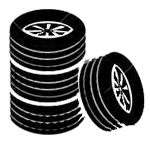What is an 'interference' engine?
An 'interference' engine is an engine where the valves and pistons occupy the same space, but not at the same time. The other engine style is a 'non-interference' engine - this design provides enough room between the pistons and the valves so that they never occupy the same space. Non-interference engines are sometimes called 'free-running' designs.
Interference engines are a fairly common engine design. All diesel engines are interference designs, and many imports. Domestic engines have tended towards non-interference designs. Although all engines use timing belts, they are more crucial on interference engines; should the timing belt malfunction, the valves and pistons will likely collide.
While this may seem like a stupid engine design, there are reasons why an engine may be designed as an interference engine. Higher compression ratios are possible, leading to better fuel economy, power, and emissions quality.
Interference engines have the inherent risk of major engine damage due to timing belt failures. See Why is it so important to change the timing belt on a [DSM]?
QA #45
Last Updated:
2016-05-31 09:48







